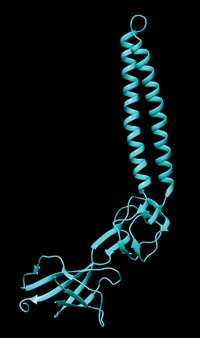Advertisement
Grab your lab coat. Let's get started
Welcome!
Welcome!
Create an account below to get 6 C&EN articles per month, receive newsletters and more - all free.
It seems this is your first time logging in online. Please enter the following information to continue.
As an ACS member you automatically get access to this site. All we need is few more details to create your reading experience.
Not you? Sign in with a different account.
Not you? Sign in with a different account.
ERROR 1
ERROR 1
ERROR 2
ERROR 2
ERROR 2
ERROR 2
ERROR 2
Password and Confirm password must match.
If you have an ACS member number, please enter it here so we can link this account to your membership. (optional)
ERROR 2
ACS values your privacy. By submitting your information, you are gaining access to C&EN and subscribing to our weekly newsletter. We use the information you provide to make your reading experience better, and we will never sell your data to third party members.
Biological Chemistry
Nitric Oxide Regulates Group Behavior Of Bacteria
Microbiology: A signaling molecule that is common in eukaryotes turns on bioluminescence in a species of aquatic bacteria
by Melissae Fellet
May 29, 2012

Bacteria in a colony communicate with one another using a chemical language of secreted small molecules. Through this process, called quorum sensing, the microbes coordinate behavior. The secreted molecules bind to receptors in individual cells, which then activate genes important to the group’s survival, such as those for virulence or biofilm formation.
Now researchers have shown for the first time that the signaling molecule nitric oxide activates quorum-sensing circuits in a species of bacteria (ACS Chem. Biol., DOI: 10.1021/cb300215t). This new pathway could help bacterial colonies respond to cues from their environment, such as those produced by their eukaryotic neighbors, the researchers say.
Previous studies have shown that colonies of the marine bacteria Vibrio harveyi release molecules to turn on their neighbors’ quorum sensing circuits when the colonies reach a certain size. Their signaling molecules include a cyclic amino acid, a borate sugar, and a fatty-acid-like molecule. The pathways activate bioluminescence in the microbes, causing them to glow blue.
Elizabeth Boon, of Stony Brook University, and her colleagues noticed that these cells also light up when treated with nitric oxide. Because the only known cellular pathways leading to bioluminescence in this species are quorum-sensing ones, the scientists thought they may have found a new quorum-sensing molecule.
To confirm their hypothesis, the researchers started looking for the genes to link nitric oxide with bioluminescence. They scanned the bacterium’s genome and found a DNA sequence coding for a nitric oxide binding protein called H-NOX. When the researchers knocked out the H-NOX gene, the bacteria treated with nitric oxide did not glow.
Next they looked for proteins that connected H-NOX to bioluminescence. Near the H-NOX gene in the genome, the researchers found a gene that resembles one coding for a known quorum-sensing receptor. They purified the protein produced by that gene and found that H-NOX bound to it. The team also observed that the protein phosphorylates a protein common to all three known quorum-sensing pathways in V. harveyi. In those pathways, phosphorylation is a key step in activating bioluminescence circuits. Based on these two observations, the researchers concluded that NO turned on quorum sensing via H-NOX.
Boon says that why the bacteria evolved this response to nitric oxide is unclear, because no obvious source of nitric oxide exists in their environment. But she and her team think the signaling molecule might come from the bacteria’s eukaryotic neighbors in the ocean.
Other bacteria come in contact with the compound. For example, Boon says, V. fischeri, a bacterial relative of V. harveyi, encounters a plume of nitric oxide when the bacteria make a home inside Hawaiian bobtail squid (Euprymna scolopes). But in this case, nitric oxide influences the bacteria’s iron metabolism, Yanling Wang of the University of California, Los Angeles, and her colleagues have found, not their bioluminescence (Proc. Natl. Acad. Sci., DOI: 10.1073/pnas.1003571107). Scientists do not know whether the cells use quorum sensing to regulate the iron metabolism.
Wang calls the discovery of nitric oxide quorum sensing in V. harveyi intriguing. Regarding why the microbes evolved the response, she notes that V. harveyi can infect eukaryotes such as shrimp, which release nitric oxide to fight such invasions. The bacteria might sense nitric oxide and then fight back by activating virulence quorum sensing circuits, she says.





Join the conversation
Contact the reporter
Submit a Letter to the Editor for publication
Engage with us on Twitter